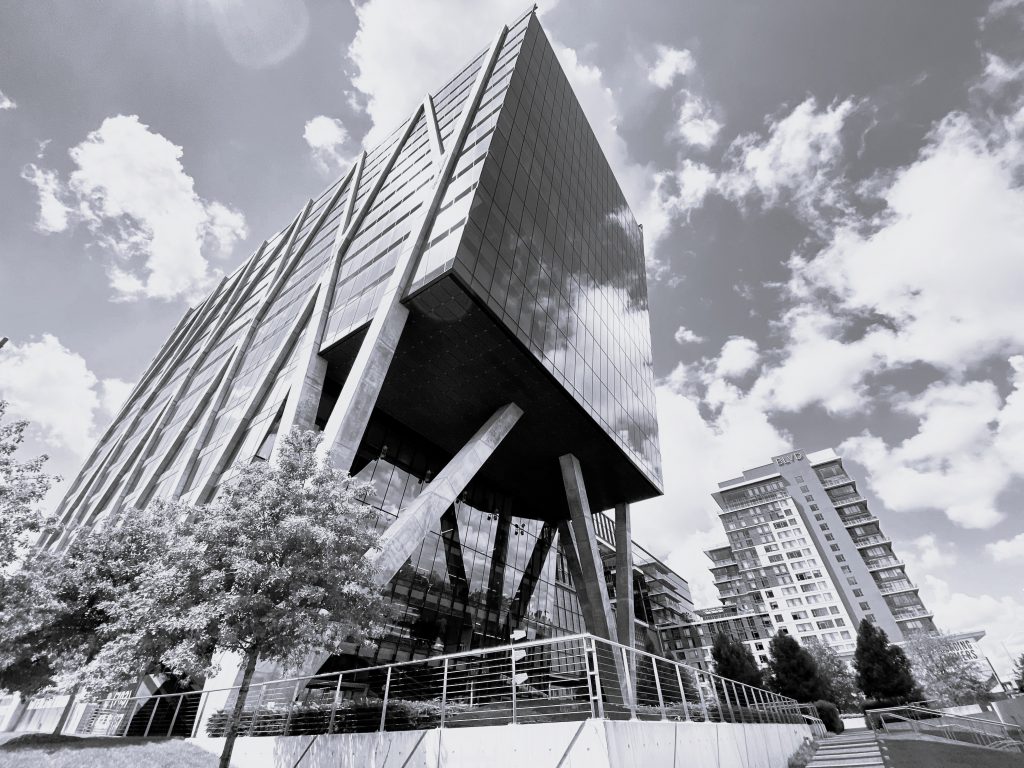The world of work has changed. Young professionals are no longer just looking for a job, they’re searching for a workplace that is purposeful.
They want to work for companies that care about their people and their impact. And that’s why B Corp values are resonating so deeply.
What is B Corp and why does it matter?
The B Corp certification is awarded to businesses that meet the highest standards of verified social and environmental performance, transparency, and accountability. It’s a rigorous process that digs into five key impact areas:
- Governance
- Workers
- Community
- Environment
- Customers
While “the workplace” isn’t a standalone category, it touches all these areas. For example, the workers category focuses on aspects like employee well-being, safety, pay equity, and job flexibility. The workplace is key in boosting the worker’s experience, whether it is in providing breakout areas that spark collaboration, quiet zones for focus or wellness rooms to unwind.
Additionally, the office is critical to meeting environmental goals. The materials used in construction and the energy used in day-to-day operation both contribute carbon emissions. That’s why more companies are prioritising certifications like BREEAM, NABERS, and WELL when selecting their office space. These frameworks don’t just assess buildings on paper, they hold them accountable across energy use, water efficiency, indoor air quality, and more.

How B Corp values are changing workplace strategies
Across the board, Environmental, Social, and Governance (ESG) principles are shaping how companies think about space. Following the “Great Resignation”, the spotlight is firmly on well-being, flexibility, and purpose. Workers have realised that they want to work for a company that cares, not just about their experience but about wider societal and environmental impacts. From hybrid working policies to biophilic design and sustainable materials, these considerations are quickly becoming the norm in the workplace.
To this end, workplace designers are creating environments that support a variety of needs and encourage meaningful interactions, implementing features such as:
- Natural light and greenery to boost mood and reduce stress
- Flexible layouts that support collaboration and quiet focus
- Wellness rooms and quiet spaces for rest and recharging
- Sustainable materials with lower embodied carbon and greater durability
- Ergonomic furniture and accessible design to support all workers
At the same time, employers are changing their location preferences. While a prestigious location once topped the list of requirements, accessibility and sustainability are now leading the charge. Offices near major transport hubs, especially those connected by the Elizabeth Line or other public transport networks, are in high demand. Taking space in well-connected locations means that workers can have a shorter and more environmentally friendly commute, improving their wellbeing while also allowing employers to access a greater pool of talent.
B Corp: A framework for impact and connection
B Corp isn’t just a framework; it’s a community of businesses that want to do better when it comes to both their workers and their wider impact.
Beyond the principles it promotes, B Corp certification also connects businesses to a community of like-minded organisations across the real estate spectrum. From landlords upgrading their spaces to meet sustainability standards to serviced office providers reporting transparently on emissions, certified firms can collaborate with others who share their values. This network spans every step of the real estate journey, from selecting sustainably accredited buildings to designing fitouts that foster productivity and well-being.
As such, this constitutes not only a network that occupiers can draw upon, but one that is influencing tenant sensibilities and expectations with regards to their office footprint. For those beginning their careers in real estate, gaining greater familiarity with B Corp and other sustainability credentials like this will be key, as these frameworks are already changing every part of the real estate landscape.




